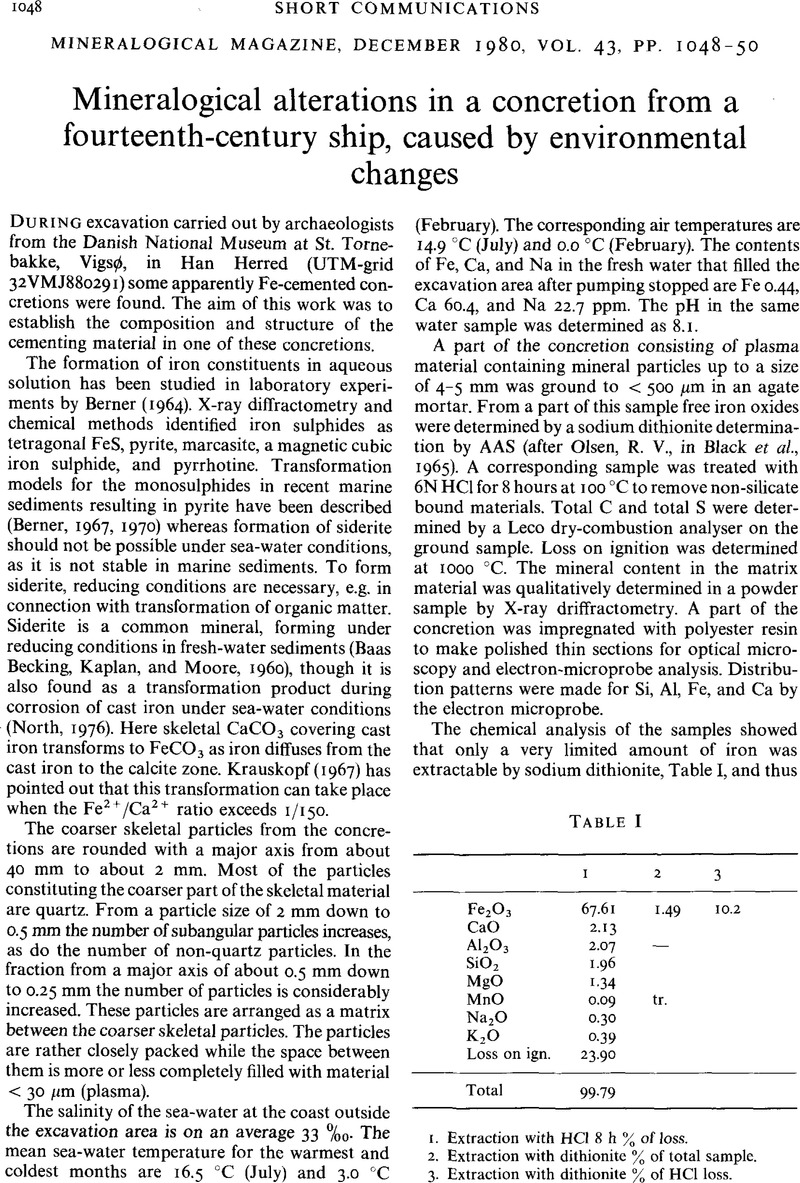Crossref Citations
This article has been cited by the following publications. This list is generated based on data provided by Crossref.
North, Neil A.
1982.
Corrosion products on marine iron.
Studies in Conservation,
Vol. 27,
Issue. 2,
p.
75.

Published online by Cambridge University Press: 05 July 2018
